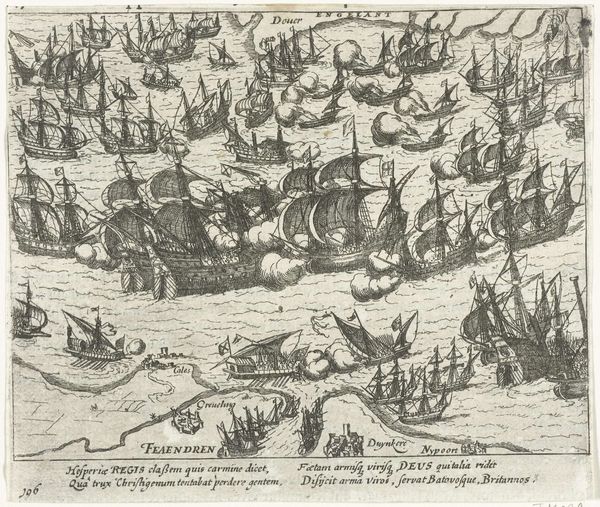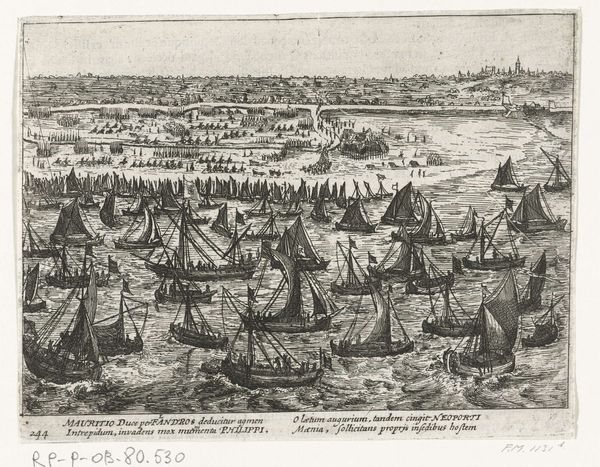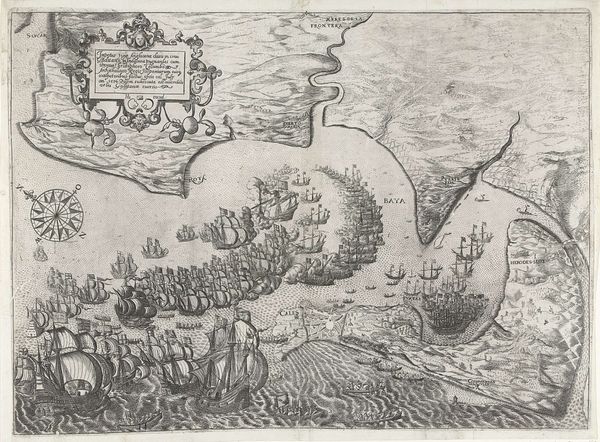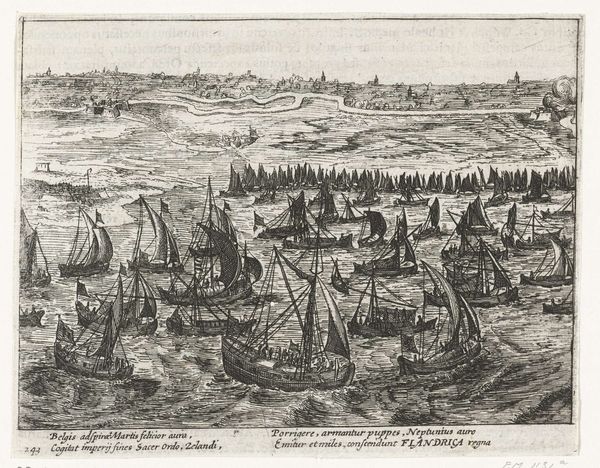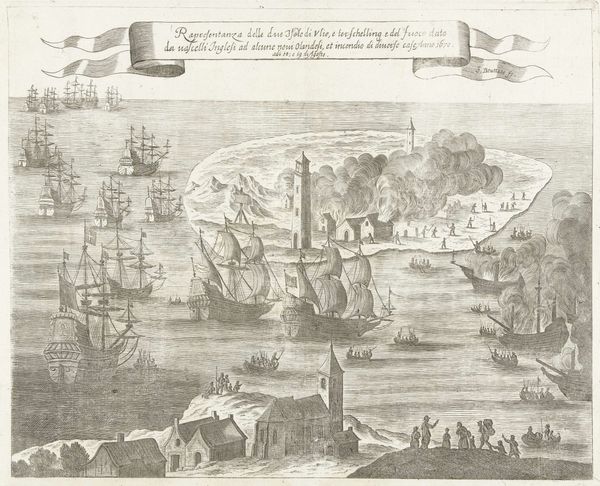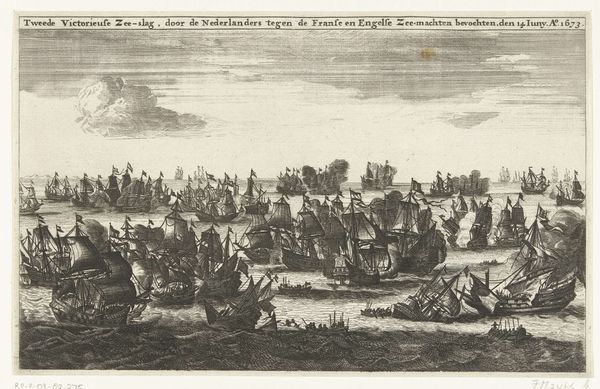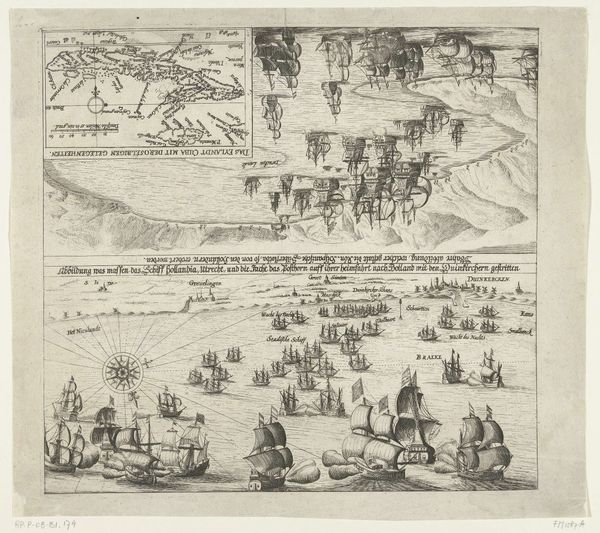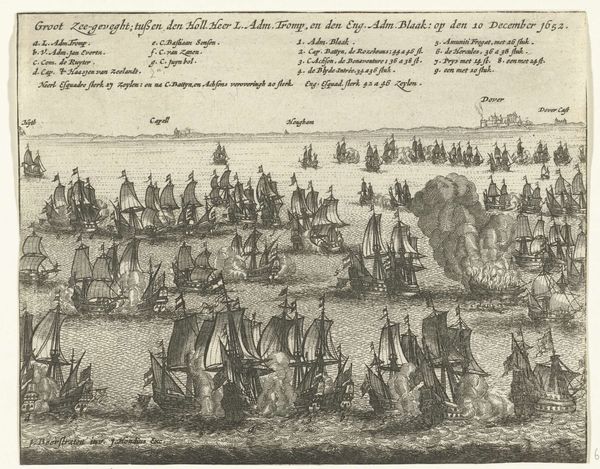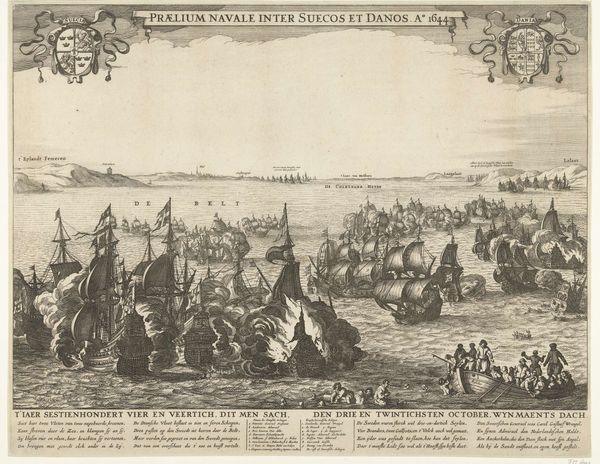
print, engraving
#
baroque
# print
#
old engraving style
#
geometric
#
line
#
cityscape
#
history-painting
#
engraving
Dimensions: height 134 mm, width 173 mm
Copyright: Rijks Museum: Open Domain
Curator: Let’s turn our attention to "Vloot van de vier keurvorsten op de Rijn, 1580," an engraving that was created between 1613 and 1615. Editor: It feels so regimented, doesn't it? This ordered procession of boats and horsemen makes me think of control and displays of power. Even the line work is meticulous. Curator: Exactly. Consider the context: This piece visualizes the fleet of the four prince-electors on the Rhine River. This display of power, frozen in ink, sends a very specific political message about dominance and influence within the Holy Roman Empire. What narratives does that suggest to you? Editor: I’m drawn to the flags—their absence of heraldry. These simple flags are acting like symbolic stand-ins for something more complicated, something… unsaid. Is it about shifting alliances or perhaps a unified front presented against some external force? Curator: It’s fascinating how you zoom into the iconography. What strikes me is the repetition, not just in the imagery of identical ships and identically dressed riders, but the literal text at the bottom in Latin, too. Consider how these elements work to amplify a certain narrative. How does the city and the culture literally build walls around it. Editor: The city—yes! Below all those soldiers are horsemen along the river, suggesting stability on both land and water, power demonstrated in all domains. Are the repeated men on horseback on the lower register simply more placeholders like the flag. What about their weapons? Are they merely symbolic rather than functional? Curator: It does speak to a period where visual symbols, displayed publicly, carried enormous weight. These horsemen are there more as political signifiers and it invites you to ponder how that affects modern life. Editor: In contrast to the order and overt declaration on the water above them, their presence adds to the underlying visual narrative that they have "conquered" not only the river but its margins too. Curator: Well, this detailed parade does reveal the intricate dance between representation, power, and propaganda so essential to understanding early modern Europe. Editor: Ultimately, it highlights the delicate balance between overt symbolism and concealed power structures, aspects that are forever imprinted through image.
Comments
No comments
Be the first to comment and join the conversation on the ultimate creative platform.
